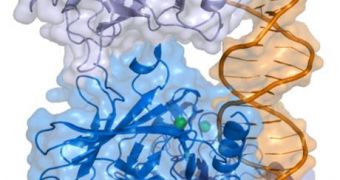Ever since induced pluripotent stem cells (iPS) were demonstrated in 2006, it has been a goal of the scientific community to find a method of producing them that is also simple, effective and cheap. Now, investigators believe they may have made considerable headway in this direction. In five studies published in the latest issue of the prestigious journal Nature, scientists show how blocking the p53 pathway in adult, specialized cells can turn them into iPS faster and more efficiently than in other methods, Nature News informs.
The new achievement also seems to suggest that cancer formation and cellular reprogramming are strongly linked and dependent on each other. P53, also known as tumor protein 53, is a transcription factor, encoded in humans on the TP53 gene. It plays an essential role in regulating the cellular cycle, which makes it act like a tumor suppressor. Thus, it is of the primary defense systems that cells in the human body have against the onset of cancer. Because it prevents dangerous genome mutations, it is also known as “the guardian of the genome” or the “master watchman.”
In established iPS production methods, roughly 1 percent of all targeted cells are actually turned into stem cells, which is an extremely low percentage. With the new technique, several genes that generate the p53 pathway were knocked out, which made it disappear. Following this, more than 10 percent of adult, specialized skin cells were turned into iPS, a very large success percentage. The agents behind the change were the viruses carrying the four commonly used reprogramming factor.
Additionally, with p53 out of the way, other iPS production methods, including those relying on viral vectors with only two or three factors, or plasmid vectors that don't modify the genome also showed signs of increased efficiency. “Anything that we can do to increase the efficiency of reprogramming is a big step forward,” explains Children's Hospital Boston in Massachusetts stem cell expert George Daley, who was not involved directly in the new studies.
In fact, the teams say, destroying p53 allows for cells with heavy DNA damage to be turned into stem cells. Although that may not seem desirable at first, it may be that they could in the future help with providing research teams with useful cellular models for a wide array of diseases that are now widespread around the world.
Journal references:
1. Takahashi, K. & Yamanaka, S. Cell 126, 663-676 (2006). 2. Hong, H. et al. Nature advance online publication doi:10.1038/nature08235 (2009). 3. Utikal, J. et al. Nature advance online publication doi:10.1038/nature08285 (2009). 4. Marion, R. M. et al. Nature advance online publication doi:10.1038/nature08287 (2009). 5. Li, H. et al. Nature advance online publication doi:10.1038/nature08290 (2009). 6. Kawamura, T. et al. Nature advance online publication doi:10.1038/nature08311 (2009).

 14 DAY TRIAL //
14 DAY TRIAL //